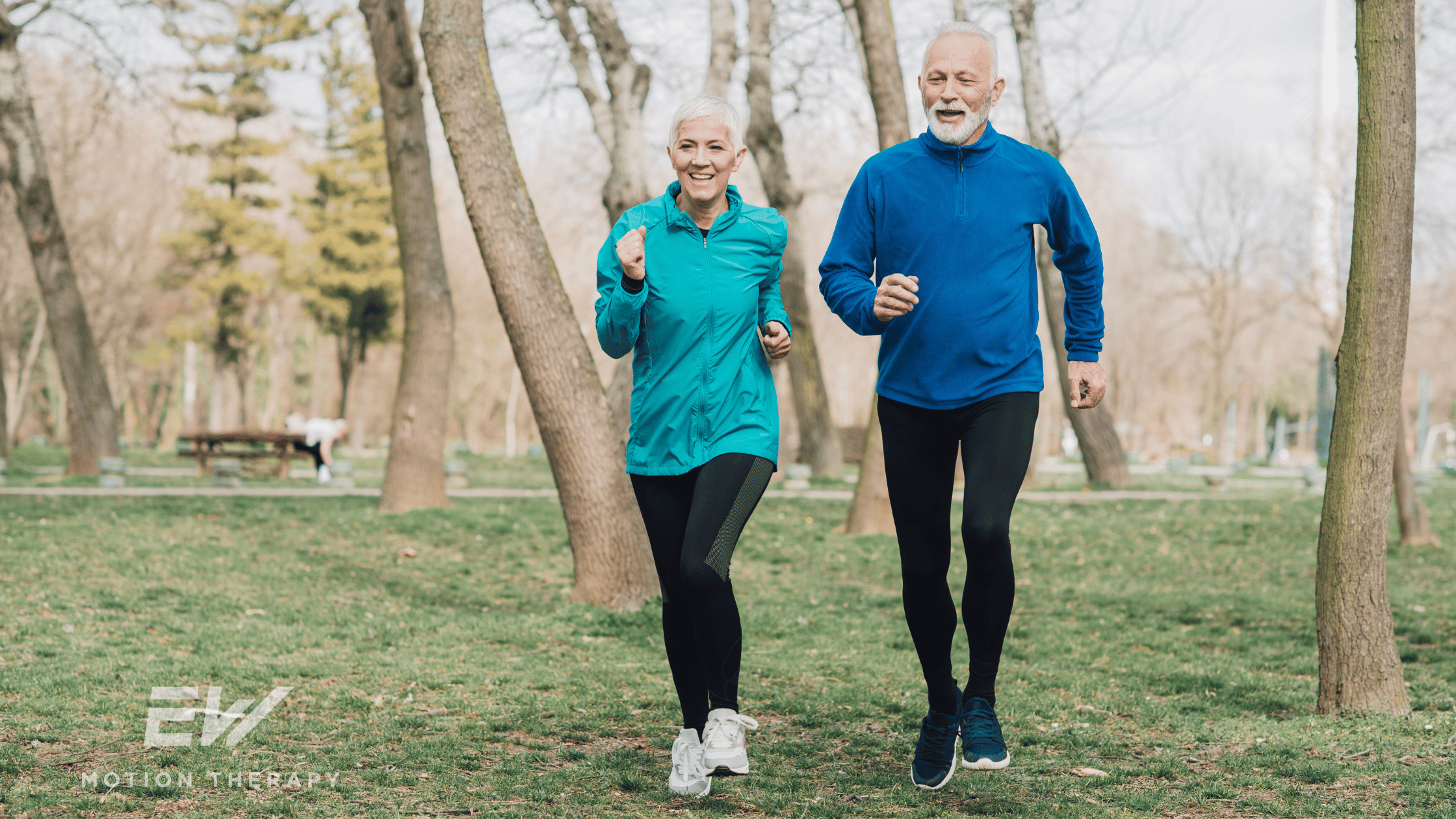The Importance of Gait Speed: Understanding and Improving Your Walking Pace

Licensed Physical Therapist, PT, DPT // EW Pilates Instructor // EW Yoga Instructor // LSVT – Big Certification // Credentialed APTA Clinical Instructor // EW Motion Therapy Homewood
Walking is a fundamental activity that we often take for granted. However, the speed at which we walk, known as gait speed, can provide valuable insights into your overall health. Especially as we age and fall risk becomes more of a problem, a consistent gait speed is vital to independence and healthy movement. At EW Motion Therapy, our balance specialists can create a personalized treatment plan to address your mobility concerns and help you move independently. Even if you decide that our services don’t fit your needs, you can still read on as we delve into the importance of gait speed, its correlation with health, methods to improve it at home, and the role of physical therapy in enhancing gait speed.
Why gait speed matters
Gait speed, the pace at which an individual walks, is a critical indicator of functional mobility and overall health. It reflects various physiological and biomechanical processes, including muscle strength, coordination, balance, and cardiovascular health.
Indicator of longevity and health
Research has shown that gait speed is a reliable predictor of longevity. Faster walking speeds are often associated with better health outcomes and a lower mortality risk. Conversely, slower gait speeds can indicate potential health issues like cardiovascular disease, cognitive decline, and mobility impairments.
Studies suggest that individuals with a gait speed of less than 1 meter per second may have a higher risk of health complications. Imagine standing at one end of a basketball court and taking just one second to reach the other side. This gives you a sense of the speed involved: a steady, brisk pace, not too fast like a sprint but faster than a casual stroll.
Assessing functional ability
Gait speed is also a practical measure of an individual's functional ability. It can help identify the risk of falls, a leading cause of injury among older adults. Healthcare professionals often use gait speed assessments to evaluate a person's independence and ability to perform daily activities safely. There is an important sweet spot when evaluating gait speed - fall risk increases with walking too quickly and too slowly. Professional intervention can help find a happy medium to ensure safety.
How gait speed can determine your overall health
Gait speed is not just a measure of how quickly you walk; it is a window into your overall health. Research has shown that safe ambulation is key in determining if someone can remain independent in their home and the community. Here are other ways gait speed can predict your overall health:
Cardiovascular health
Gait speed is closely linked to cardiovascular fitness. A faster gait speed typically indicates a healthier heart and better cardiovascular function. Walking requires the coordination of multiple body systems, including the heart, lungs, and muscles. The sooner you become regularly active, the easier it will be to remain active and maintain cardiovascular health as you age.
Cognitive function
There is a strong correlation between gait speed and cognitive health. Studies have found that slower gait speeds are often associated with cognitive decline and conditions such as dementia. This is because walking requires cognitive processes like planning, decision-making, and attention, which are impaired in cognitive disorders.
Musculoskeletal health
The musculoskeletal system, which includes bones, muscles, and joints, plays a significant role in determining gait speed. Conditions like arthritis, osteoporosis, and muscle weakness can reduce gait speed. Regular monitoring can help detect these issues early and prompt appropriate interventions.
How to improve your gait speed at home
Improving gait speed can enhance overall health and mobility. There are some practical exercises and activities you can do at home to boost your gait speed. If you try these exercises at home, get a doctor’s approval and have someone observe you doing the exercises.
Strength training
Building muscle strength, particularly in the lower extremities, improves gait speed. Exercises such as sit-to-stand and heel raises at a countertop can help strengthen the muscles in walking. Aim to perform these exercises at least twice a week.
Balance exercises
Good balance is essential for a steady and fast gait. Practice balance exercises such as standing on one leg, heel-to-toe walks, and tai chi. These activities can help reduce the risk of falls and enhance your walking speed. Additionally, an assistive device can help you navigate safely as you work to improve balance and gait speed.
Aerobic exercises
Aerobic exercises like brisk walking, cycling, and swimming can improve cardiovascular health and endurance, which is vital for maintaining a good gait speed. Aim for at least 150 minutes (20-25 minutes/day) of moderate-intensity weekly aerobic activity.
Flexibility exercises
Maintaining flexibility in your muscles and joints can contribute to a more efficient and faster gait. Incorporate stretching exercises like hamstring, calf, and hip flexor stretches into your daily routine.
How physical therapy can help
While home exercises are beneficial, professional guidance can optimize your gait speed improvement efforts. Physical therapy offers specialized interventions tailored to your needs.
Personalized assessment
Physical therapists perform detailed assessments to identify factors affecting your gait speed. These assessments may include gait analysis, muscle strength testing, balance evaluation, and cardiovascular fitness assessments. Based on these findings, they develop a personalized treatment plan.
Targeted interventions
Physical therapists provide targeted interventions to address the underlying issues affecting gait speed. They start with working on step length and a regular gait pattern to ensure safety while walking, then using auditory cues like a metronome to increase and synchronize cadence. Other interventions may include:
- Strength training: Focused exercises to strengthen muscles in the lower extremities critical for walking.
- Balance training: Activities and exercises to enhance balance and coordination.
- Core strengthening: Specific techniques to engage the core are essential for posture and support while walking.
- Cardiovascular conditioning: Exercises to improve heart and lung function, enhancing overall endurance.
Education and support
Physical therapists educate patients about safe practices and provide ongoing support for long-term improvement. They can teach you how to incorporate exercises into your daily routine and offer tips for maintaining motivation.
Gait speed is more than just a measure of how quickly you walk; it is a comprehensive indicator of your overall health. By understanding its importance and taking steps to improve it, you can enhance your mobility, reduce the risk of falls, and enjoy a better quality of life. Incorporating home exercises and seeking the expertise of a physical therapist can significantly impact your gait speed and overall well-being. Our balance specialists at EW Motion Therapy can help improve your gait speed so you can move safely and maintain your independence. To learn more about reducing fall risk in every room of your home, click below to download our free home safety guide.


